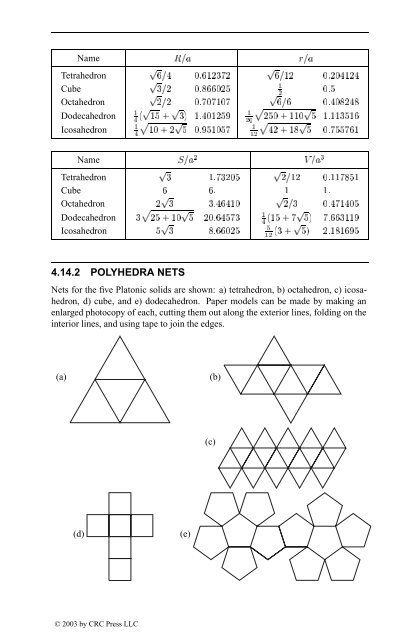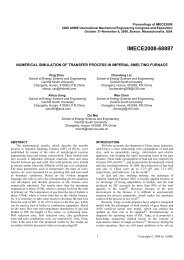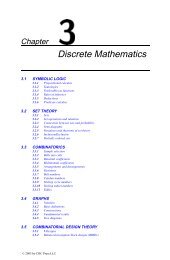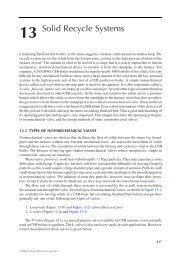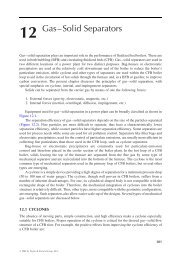Chapter 4: Geometry
Chapter 4: Geometry
Chapter 4: Geometry
You also want an ePaper? Increase the reach of your titles
YUMPU automatically turns print PDFs into web optimized ePapers that Google loves.
Name Ê Ö<br />
Ô Ô<br />
Tetrahedron<br />
¼½¾¿¾ ½¾ ¼¾¼½¾<br />
Ô<br />
½<br />
Cube<br />
¿¾ ¼¼¾<br />
¼<br />
Ô<br />
Ô ¾<br />
Octahedron<br />
¾¾ ¼¼½¼<br />
¼¼¾<br />
Ô Ô<br />
Ô Ô<br />
½<br />
½<br />
Dodecahedron ½ · ¿µ ½¼½¾ ¾¼ · ½½¼ ½½½¿½<br />
Icosahedron<br />
Ô<br />
´<br />
½<br />
<br />
½¼ · ¾ Ô <br />
¼½¼<br />
¾¼<br />
½<br />
½¾<br />
Ô<br />
¾ · ½ Ô <br />
¼½<br />
Name Ë ¾ Î ¿<br />
Ô<br />
Ô<br />
Tetrahedron<br />
¿ ½¿¾¼<br />
¾½¾ ¼½½½<br />
Cube ½ ½<br />
Octahedron Ô Ô<br />
¾ ¿ ¿½¼<br />
¾¿ ¼½¼<br />
Ô<br />
Dodecahedron Ô ½<br />
¿ ¾·½¼ ¾¼¿<br />
´½ · Ôµ ¿½½<br />
Ôµ<br />
Icosahedron Ô<br />
¿ ¼¾<br />
´¿ · ¾½½<br />
½¾<br />
4.14.2 POLYHEDRA NETS<br />
Nets for the five Platonic solids are shown: a) tetrahedron, b) octahedron, c) icosahedron,<br />
d) cube, and e) dodecahedron. Paper models can be made by making an<br />
enlarged photocopy of each, cutting them out along the exterior lines, folding on the<br />
interior lines, and using tape to join the edges.<br />
(a)<br />
(b)<br />
(c)<br />
(d)<br />
(e)<br />
© 2003 by CRC Press LLC


